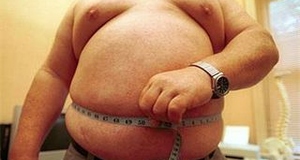America's Growing Problem: Increasing Levels of Childhood Obesity
By
2010, Vol. 2 No. 03 | pg. 2/2 | « This idea is further supported by the opposing theory to the “set-point theory:” the “settling point theory.” This more modern theory proposes that we maintain weight when our various metabolic feedback regions loop, tuned by whatever susceptible genes, and settle into an equilibrium with our environment. As discussed above, recent economic and cultural changes in the environment over the past decades have upset the equilibrium of many individuals. This upset in equilibrium drives them toward obesity, no longer able to maintain their current weight when phased with the variety of environmental changes that affect health negatively. For example, where thirty years ago more families may have eaten home-cooked dinners nightly together, in this day and age, fast food and other unhealthy variations are the norm. These changes over the past decade resulted in the change in many individuals’ weights toward obesity by upsetting their equilibrium. Now, people are accustomed to these changes and have a much higher set-point weight. After observing the negative environmental changes combined with the negative changes in the development of the individual, it is easy to see how the surrounding environment’s transformation across the past two decades has negatively affected the health of America and led to increased percentages of obesity.In consideration of these facts, it is necessary to set up a comprehensive national health awareness and prevention program. First, the program must make the nation aware of the hazardous health conditions associated with obesity. Americans must be aware of the negative effects of obesity as well as the positive aspects to maintaining a lower weight through physical activity and other means. As Koplan and Dietz state, “Modest weight losses of 5% to 10% of body weight improve glucose tolerance, hyperlipidemia, and blood pressure in obese adults. Because physical activity may prevent obesity, improve obesity-associated comorbidities, reduce mortality, and have beneficial effects on a variety of other chronic diseases, strategies to increase physical activity must be implemented for the entire population” (Koplan and Dietz, 442). Constant physical activity, regardless of the level of strain, is a very positive factor working toward combating obesity. Also, with the proper knowledge regarding the negative effects of obesity and the positive aspects of maintaining a lower weight, the American public would be more willing to work toward this goal. As Koplan and Dietz suggest, “Public health and clinical strategies to address the obesity epidemic must begin with weight maintenance for the adult population, weight loss for the obese, and increased physical activity” (Koplan and Dietz, 442). Like recent Truth ads geared against cigarettes, it is the responsibility of the government to give its citizens the harsh, realistic information about the situation and then allow them to make an informed decision. Through proper guidance and provision of knowledge, the American public will understand the health risk of obesity and take the necessary steps to prevent it. In addition, a prevention program in early elementary school, involving proper dieting at school lunches and increased concentration geared toward physical education, needs to be implemented. As Greg Crister cites in his article “Too Much of a Good Thing,” “In four randomized studies of obese 6- to 12-year-olds, those who were offered frequent, simple behavioral advice were substantially less overweight 10 years later than kids who did not get the advice. In fact, 30% of those studied were no longer obese at all” (Crister, 463). According to this statement, if children are encouraged at an early age to avoid obesity through proper eating habits and exercise, it will make a substantial difference in their level of obesity and their general health. Supervised low-saturated fat and low-cholesterol diets are very beneficial at an early age, where the development period of a child is critical based on their food intake and eating patterns. Through proper parental and school guidance, the obesity epidemic can be attacked at its source: the nation’s youth. In conclusion, a national awareness and prevention strategy, specifically geared toward America’s youth, is necessary to combat the growing epidemic of obesity in America. Despite Worley’s claims, no one is mocking or discriminating against those who are overweight by suggesting a program geared toward obesity prevention. Everyone should be happy with their body, and never be ashamed by any aspect of who they were born as. In the same respect, everyone should be concerned with their health, and more importantly, the health of their children. ReferencesBouchard Claude, Bray George A., and Jones W.P. Handbook of Obesity. New York: Marcel Dekker, 1997. Suggested Reading from Inquiries Journal
Inquiries Journal provides undergraduate and graduate students around the world a platform for the wide dissemination of academic work over a range of core disciplines. Representing the work of students from hundreds of institutions around the globe, Inquiries Journal's large database of academic articles is completely free. Learn more | Blog | Submit Latest in Health Science |














